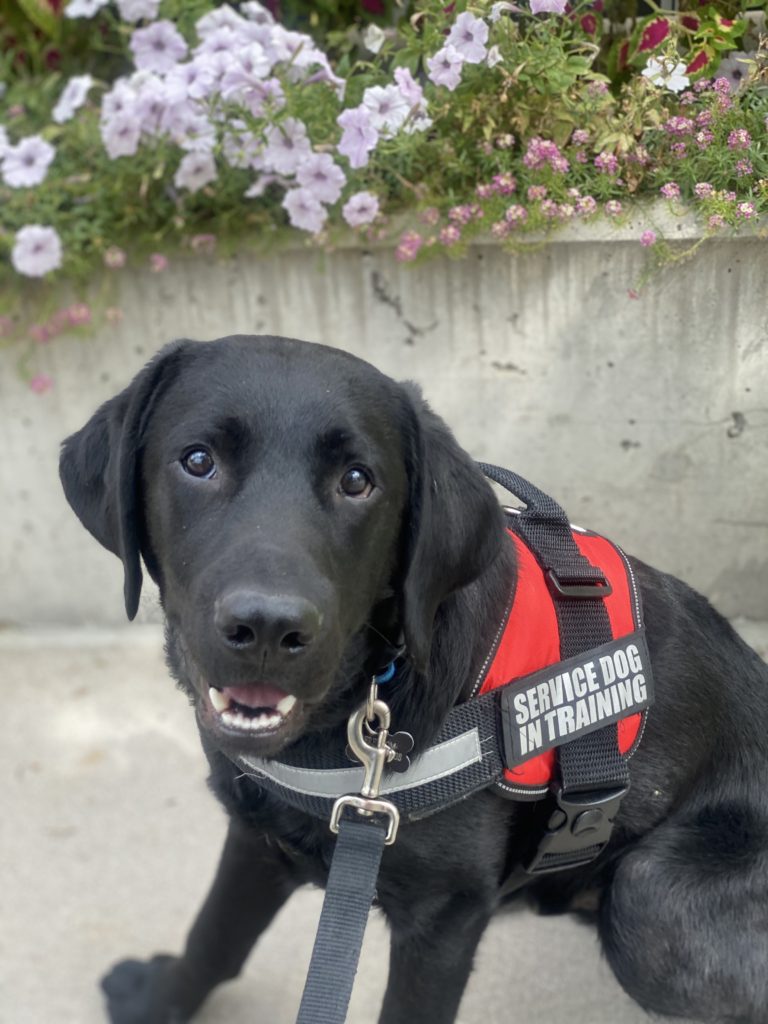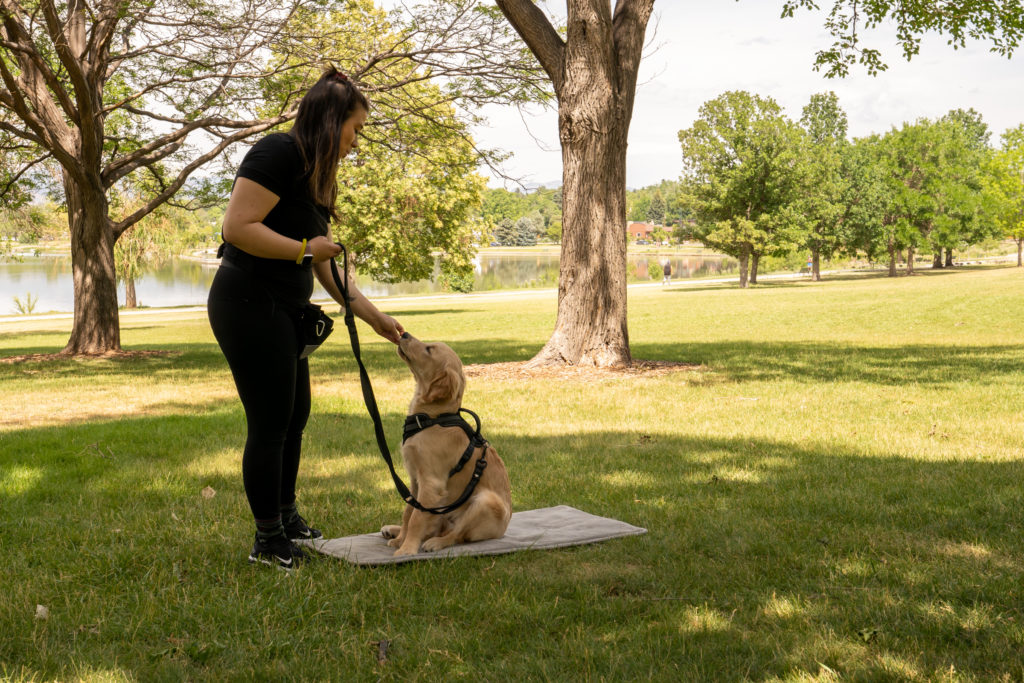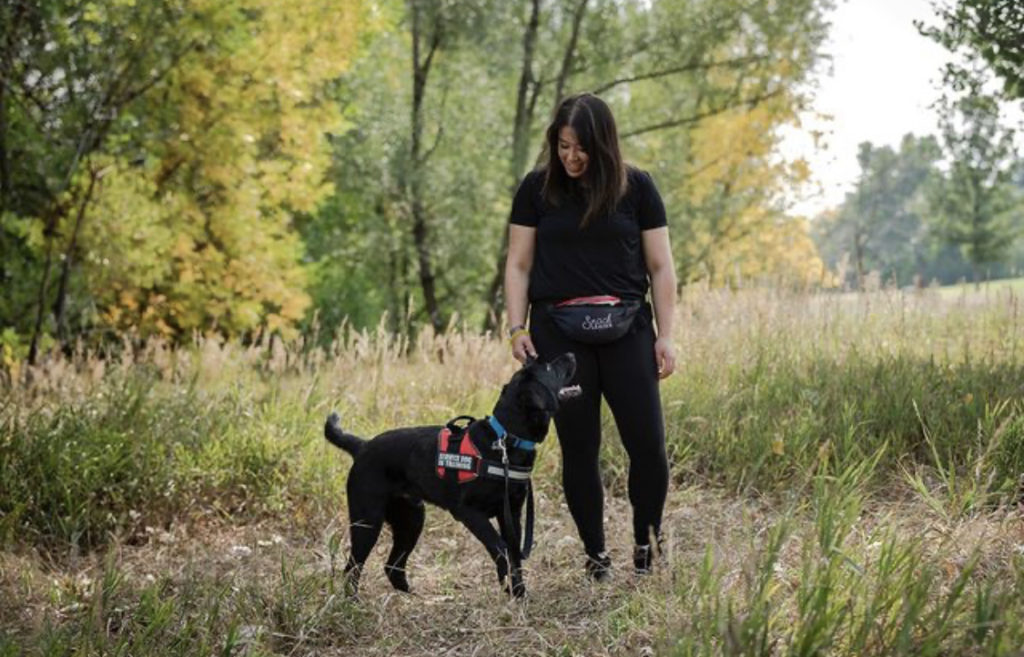Let’s face it: living with diabetes is a challenge, especially when it comes to monitoring blood sugar levels. That’s why service dogs have become increasingly popular, as they provide a unique solution to aid in detecting and alerting changes in glucose levels. These dogs, often referred to as Diabetes Alert Dogs, or DADs, are trained to stand by your side, offering additional support when it comes to monitoring your blood glucose levels…but what exactly does diabetes alert dog training entail?
These four-legged friends are trained to provide you with the peace of mind and support you need to manage diabetes; however, a diabetes-alert service dog isn’t a good fit for everyone with diabetes, and should never 100% replace your medical devices or CGM.
As a service dog trainer, I’ve come across many clients who think they want a service dog, but don’t realize how much work is actually required to train, maintain training, and even care for the dog.
Step 0: Could I benefit from a Service Dog?
For some, caring for a dog can create more stress.
Remember, just because your dog is a service dog, you’ll still have to upkeep and maintain its training (if you’re self-training, it will take even more work upfront). Consider whether you have the time, budget, and energy to care for a dog. Just like any other dog, your diabetes service dog will need their social, physical, and mental needs met.
It might sound like I’m trying to talk you out of getting a service dog – but I’m just trying to ensure you’re ready because it’s a big commitment!
With that being said, I’d like to delve into the perks of why having a service dog can be beneficial for someone with diabetes. Let’s explore a few reasons why:
- If you don’t wake up when your blood sugar alarm goes off overnight, your dog can be trained to wake you up when your alarm goes off
- Your dog can be trained to alert you before your CGM monitor and/or you measure your blood sugar
- Additionally, your dog can be trained to fetch certain medications for you when needed – which can be especially useful if you live alone.
- While this isn’t limited to people with diabetes, your dog can also be trained to ring an alarm or call 911 for emergency situations
If you’re considering a blood sugar alert/diabetes service dog, take a moment to reflect on whether it would serve you well. Here are a few questions you can ask yourself:
- When self-training your own service dog, remember that not every dog will have what it takes to be a service dog. Are you ready to put in a lot of work, even if it means your dog may end up being a pet dog instead? What is your plan in case you don’t want a pet dog?
- There is a lot of work up-front when self-training your own service dog. Are you willing to put in a lot of training hours for the first 1-2 years?
For more information on what it takes to train a service dog in general, you can check out my post on how to train a psychiatric service dog here (the same items apply). Consider assisting a friend in dog training or occasionally dog sitting for a neighbor to assess if caring for and training another animal aligns with your current lifestyle. A “YES” would mean you’re ready to take the next step – choosing your next service dog!
Step 1: Choosing the Right Dog FOR Diabetes Alert Dog Training
Choosing the right dog is the crucial first step towards achieving success in this task. While any dog can potentially be trained for diabetes alert, some breeds naturally possess the essential traits of a successful service dog.
Breeds such as Labrador Retrievers, Poodles, and Golden Retrievers are often selected for their remarkable intelligence, trainability, and ability to stay focused for extended periods.
While plenty of mixed-breed dogs excel as service dogs, opting for a breeder specializing in producing service dogs can increase your chances of obtaining a puppy that also has the temperament for an excellent diabetes service dog.

Step 2: Basic MANNERS Training & Puppy Socialization
Before diving into specific diabetes alert training, ensuring your dog has a solid foundation in basic behaviors is essential. Teaching your dog basic manners like sit, stay, come, and heel forms a solid foundation for a dog who can be well-mannered in public. Remember that consistency, positive reinforcement, and patience are significant in achieving success in this phase.
If you’re adopting a new puppy, socialization is KEY! Their critical socialization period ends at around 16 weeks and this is where their temperament is shaped. Remember – temperament will determine their personality, which is much more challenging to train in the long run. If you want more information on how to set your puppy up for success, I recommend checking out my new puppy parent course.

Step 3: INTRO TO DIABETES ALERT DOG TRAINING
Teaching your dog to detect and understand the scent of your breath or body when your blood sugar levels fluctuate is critical for success. To begin developing this skill, start collecting scents during different blood sugar episodes, and storing them in airtight containers. Gradually introduce the samples to your dog, rewarding them when they show signs of recognition or alertness. Be sure to check out my detailed breakdown of how to begin scent training with your diabetes service dog in training.
Step 4: BLOOD SUGAR Alert Training
Once your dog has mastered scent recognition, it’s time to teach them to reliably alert you to changes in your blood sugar levels. This can be achieved using various methods, such as pawing, nudging, or fetching a specific object when they detect a significant change in your scent. Consistency, repetition, and positive reinforcement are crucial during this training phase.
Step 5: Public Access and Distraction Training
It is essential to train your service dog to be comfortable in public spaces where there may be numerous distractions. Gradually introduce them to different environments, such as shopping malls, restaurants, or parks, increasing exposure over time. This training phase will ensure that your faithful friend can accompany you wherever you go, providing excellent support and companionship as you manage your diabetes.
For a full list of public access training, be sure to download my free sample public access test.
